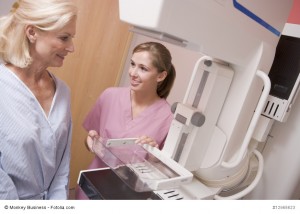What is Mammography?
Mammography, also known as a mammogram, is the examination of the breast using x-rays. Mammography is considered the most effective tool for early breast tumor detection. Most medical experts agree that successful treatment of breast cancer often is linked to early diagnosis. Mammography plays a central part in early detection of breast cancers because it can show changes in the breast up to two years before a patient or physician can feel them.
What are the advantages of digital mammography and computer-aided detection?
- Compared to conventional mammography which takes 10-15 minutes, digital mammography images are taken in less than a minute.
- The superior contrast resolution of digital mammography and its ability to manipulate images make for more accurate detection of breast cancers.
- Computer-aided detection, or CAD, obtains a second, computerized reading in the hope of finding more cancers or more accurately gauging signs of malignancy.
- Digital mammograms can be archived in various ways and easily retrieved, and copied.
When should I schedule my mammogram?
Before scheduling a mammogram, you should discuss problems in your breasts with your doctor. In addition, inform your doctor of hormone use, any prior surgeries, and family or personal history of breast cancer. Generally, the best time is one week following your period. Do not schedule your mammogram for the week before your period if your breasts are usually tender during this time. Always inform your x-ray technologist if there is any possibility that you are pregnant.
How should I prepare for a mammogram?
On the day of the exam:
- Do not wear lotion, deodorant, or powder under your arms or on your breasts
- Describe any problems you’re experiencing with your breasts with your technologist
- Remove all jewelry and clothing from the waist up. You will be given a gown that opens in the front.
What should I expect during this exam?
To image your breast, a x-ray technician will position you near the machine and your breast will be placed on a platform and compressed with a paddle. Breast compression is necessary in order to:
- Even out the breast thickness – so that all of the tissue can be visualized.
- Spread out the tissue – so that small abnormalities won’t be obscured.
- Allow use of a lower x-ray dose.
- Hold the breast still – to eliminate blurring of the image caused by motion.
- Reduce x-ray scatter – to increase picture sharpness.
The technologist will go behind a glass shield while making the x-ray exposure. You will be asked to change positions slightly between views. The process is repeated for the other breast. Routine views are a top-to-bottom and side view.


